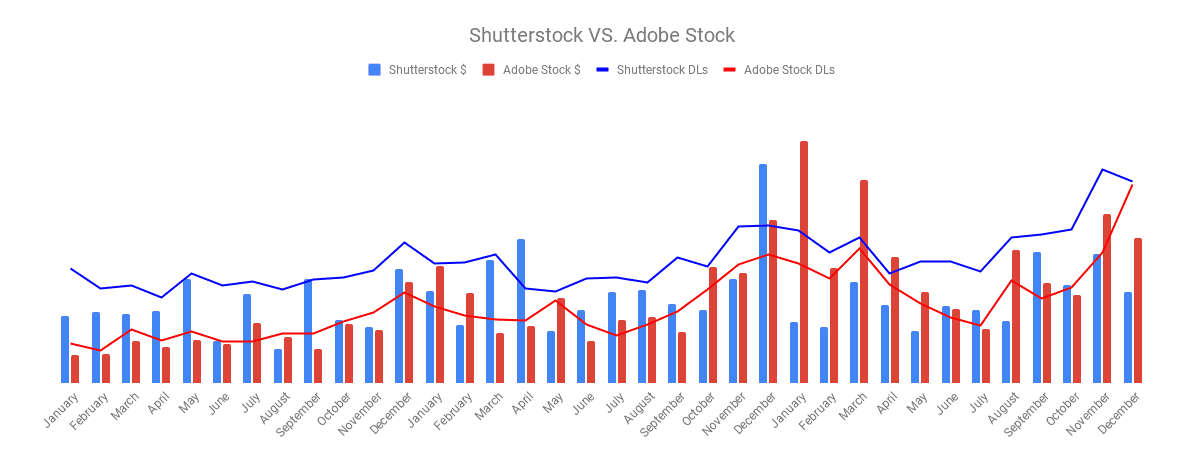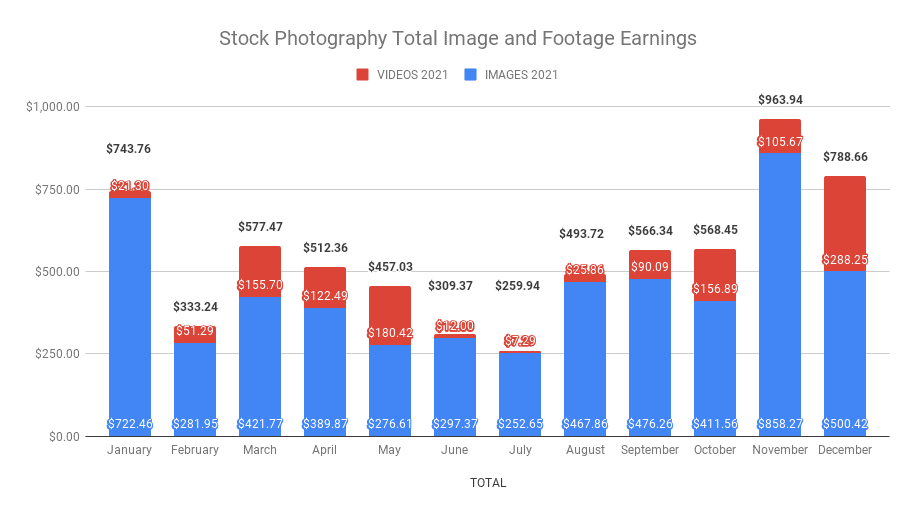Introduction
Welcome to the world of Adobe Stock, where creativity meets commerce. In this blog post, we'll delve into the exciting realm of stock photography and explore the immense earning potential that Adobe Stock offers to photographers and content creators. Discover how this platform has become a powerhouse in the visual content industry, providing a space for artists to showcase their work and monetize their creative efforts. Join us as we uncover the key elements that make Adobe Stock a lucrative avenue for individuals looking to turn their passion for photography into a source of income.
Also Read This: How to Block YouTube Ads on Your iPad Effectively
How Adobe Stock Works

Understanding the workings of Adobe Stock is crucial for anyone aspiring to capitalize on their photography skills. Let's break down the process:
- Submission and Approval: To get started, creators submit their photos to Adobe Stock for review. The platform has specific guidelines regarding image quality, composition, and legal requirements. Ensuring your submissions meet these criteria is essential for approval.
- Portfolio Management: Once approved, contributors can manage their portfolios within the Adobe Stock platform. This includes organizing and categorizing images, as well as tracking performance metrics.
- Keywording and Metadata: Effectively describing your images is key to their discoverability. Contributors add relevant keywords and metadata to each photo, enhancing its visibility in search results and increasing the chances of sales.
- Sales and Licensing: Adobe Stock operates on a licensing model. Customers can purchase licenses for images, allowing them to use the content for various purposes, such as marketing materials, websites, or publications. Contributors earn royalties based on the type of license and the customer's subscription plan.
Beyond the basics, Adobe Stock also offers a subscription-based service, where customers pay a monthly fee to access a certain number of downloads. This model provides contributors with a consistent stream of income, especially if their images are popular among subscribers.
Here's a simple table outlining the key elements of Adobe Stock:
| Aspect | Description |
|---|---|
| Submission Process | Creators submit photos for review, ensuring they meet Adobe Stock's quality and legal standards. |
| Portfolio Management | Contributors organize and manage their portfolios, keeping track of performance metrics. |
| Keywording and Metadata | Effective use of keywords and metadata enhances the discoverability of images in search results. |
| Sales and Licensing | Contributors earn royalties based on the type of license purchased by customers. |
By mastering these aspects, contributors can navigate the Adobe Stock ecosystem effectively, optimizing their chances of success and maximizing their earnings.
Also Read This: How to Access Rumble's Platform: A Step-by-Step Guide
Benefits of Joining Adobe Stock

Joining Adobe Stock as a contributor comes with a host of advantages, making it an appealing platform for photographers and content creators. Let's explore the key benefits:
- Global Exposure: Adobe Stock boasts a vast global audience, providing contributors with unparalleled exposure for their work. Your photos have the potential to reach a diverse and widespread customer base.
- High Earning Potential: One of the standout benefits is the high earning potential. Adobe Stock offers competitive royalty rates, allowing contributors to earn a significant income from their creative endeavors.
- Integration with Creative Cloud: For those already using Adobe Creative Cloud, contributing to Adobe Stock seamlessly integrates with your existing workflow. It's a streamlined process that enhances efficiency and convenience.
- Varied Licensing Options: Adobe Stock provides customers with different licensing options, including standard and extended licenses. This versatility allows contributors to cater to various client needs, expanding their earning opportunities.
- Insightful Analytics: Contributors gain access to detailed analytics and performance metrics for their portfolio. This data allows for informed decision-making, helping creators understand which types of content resonate most with their audience.
Additionally, Adobe Stock's partnership with Adobe Creative Cloud means that contributors can easily submit content directly from their favorite Adobe applications, streamlining the submission process.
Here's a breakdown of the key benefits in a concise table:
| Benefit | Description |
|---|---|
| Global Exposure | Reach a diverse and widespread audience on a global scale. |
| High Earning Potential | Earn competitive royalties, providing a significant income stream. |
| Integration with Creative Cloud | Seamlessly integrate contributing to Adobe Stock with your existing Adobe Creative Cloud workflow. |
| Varied Licensing Options | Offer customers different licensing options to cater to various client needs. |
| Insightful Analytics | Access detailed analytics for your portfolio to make informed decisions about your content. |
Overall, the benefits of joining Adobe Stock extend beyond just financial rewards, providing contributors with a platform that values their creativity and offers tools for continued success.
Also Read This: Is Marquee Network Available on YouTube TV? A Comprehensive Guide
Understanding the Earnings Model
Delving into the intricacies of Adobe Stock's earnings model is essential for contributors looking to make the most out of their creative efforts. Here's a comprehensive look at how the earnings model works:
- Royalty Structures: Adobe Stock operates on a royalty-based system, where contributors earn a percentage of the sale price of their images. The royalty rate can vary based on factors such as the contributor's level and the type of license purchased by the customer.
- Contributor Levels: Adobe Stock has different contributor levels, ranging from beginner to platinum. As contributors accumulate downloads and sales, they move up the levels, unlocking higher royalty rates and additional benefits.
- License Types: The type of license a customer purchases also influences the earnings. Standard licenses, which cover most common usage scenarios, provide a lower royalty rate than extended licenses, which allow for broader usage rights.
- Subscription Model: Adobe Stock offers a subscription-based model where customers pay a monthly fee for a certain number of image downloads. Contributors earn based on the number of downloads and their royalty rate, providing a steady income stream.
It's crucial for contributors to pay attention to the terms and conditions associated with each type of license, as this directly impacts their earnings. Additionally, actively participating in Adobe Stock's community and consistently producing high-quality content can contribute to faster advancement through contributor levels.
Here's a breakdown of the key components in a simplified table:
| Aspect | Description |
|---|---|
| Royalty Structures | Earn a percentage of the sale price based on contributor level and license type. |
| Contributor Levels | Advance through contributor levels for higher royalty rates and additional benefits. |
| License Types | Differentiate between standard and extended licenses, impacting the royalty rate. |
| Subscription Model | Earn based on the number of downloads from customers with subscription plans. |
Understanding the nuances of the earnings model empowers contributors to make informed decisions, strategically optimize their portfolio, and ultimately maximize their earnings potential on Adobe Stock.
Also Read This: Did Sam and Colby Quit YouTube in 2023
Tips for Maximizing Earnings
Unlocking the full earning potential on Adobe Stock requires a strategic approach and attention to various details. Here are some invaluable tips to help contributors maximize their earnings:
- Keyword Optimization: Invest time in thorough keywording and metadata to enhance the discoverability of your images. Use relevant and specific keywords that accurately describe the content of your photos.
- Diversify Your Portfolio: Expand your portfolio by incorporating a variety of subjects, styles, and concepts. Cater to different niches and target audiences, increasing the likelihood of attracting a broader range of customers.
- Stay Informed About Trends: Keep a pulse on current visual trends in the market. Producing content that aligns with popular themes and styles can increase the demand for your images.
- Regularly Update Your Portfolio: Regularly refresh your portfolio with new and high-quality content. This not only keeps your collection relevant but also signals to the algorithm that you are an active and engaged contributor.
- Promote Your Portfolio: Leverage social media and other online platforms to promote your Adobe Stock portfolio. Directing traffic to your images increases the likelihood of sales and boosts your overall visibility.
Additionally, contributors should consider participating in Adobe Stock's special requests, where customers can request specific content. Fulfilling these requests can lead to additional sales and increased exposure.
Here's a summarized list of tips in a table format:
| Tip | Description |
|---|---|
| Keyword Optimization | Enhance discoverability by using relevant and specific keywords in your metadata. |
| Diversify Your Portfolio | Expand your collection to attract a broader range of customers with varied interests. |
| Stay Informed About Trends | Align your content with current visual trends to increase demand for your images. |
| Regularly Update Your Portfolio | Keep your portfolio fresh with new and high-quality content to stay relevant and active. |
| Promote Your Portfolio | Utilize social media and other platforms to drive traffic and increase visibility. |
By implementing these tips, contributors can not only optimize their earnings on Adobe Stock but also build a sustainable and successful presence in the stock photography industry.
Also Read This: How to Find a Video Editor on Behance
Success Stories
Embarking on a journey with Adobe Stock has proven to be a game-changer for numerous photographers, paving the way for inspiring success stories within the creative community. Here are a few noteworthy tales of triumph:
- John Turner's Remarkable Rise: John Turner, a novice photographer, saw significant growth in his earnings on Adobe Stock by diligently applying keyword optimization techniques. By strategically choosing keywords that resonated with a broader audience, Turner's images gained increased visibility, resulting in a substantial uptick in downloads and sales.
- Anna Rodriguez's Niche Success: Anna Rodriguez found her niche in the world of Adobe Stock by specializing in a particular style of photography – minimalist landscapes. By consistently delivering high-quality and unique content within this niche, Rodriguez developed a dedicated following and secured extended licenses for her images, significantly boosting her overall earnings.
- Marcus Nguyen's Strategic Portfolio Management: Marcus Nguyen strategically managed his Adobe Stock portfolio by regularly updating it with fresh and diverse content. By staying attuned to market trends and customer demands, Nguyen ensured that his portfolio remained relevant, resulting in increased sales and elevated royalty rates as he ascended through contributor levels.
These success stories highlight the diverse paths contributors can take to achieve substantial earnings on Adobe Stock. It's essential to recognize that success often stems from a combination of strategic planning, creativity, and adaptability to the evolving dynamics of the stock photography industry.
Here's a snapshot of the key success stories:
| Contributor | Success Strategy |
|---|---|
| John Turner | Applied effective keyword optimization to boost visibility and downloads. |
| Anna Rodriguez | Specialized in minimalist landscapes, securing extended licenses for increased earnings. |
| Marcus Nguyen | Strategically managed his portfolio, staying relevant and adapting to market trends. |
These success stories serve as both inspiration and a valuable source of insights for current and aspiring contributors on Adobe Stock. By learning from these achievements, photographers can tailor their strategies to capitalize on the platform's earning potential and carve out their own success stories.
Also Read This: How to View Age-Restricted Content on Dailymotion Unlock Exclusive Videos
Common Challenges and How to Overcome Them
While the journey on Adobe Stock can be rewarding, contributors often encounter common challenges along the way. Understanding these challenges and implementing effective solutions is crucial for sustained success. Let's explore some of these hurdles and strategies to overcome them:
- Fierce Competition: The stock photography industry is highly competitive. To stand out, focus on niche markets or unique styles that differentiate your work. Quality and originality are key.
- Keywording Dilemmas: Contributors often struggle with choosing the right keywords. Take the time to research and select relevant, high-traffic keywords that accurately describe your images. This enhances discoverability.
- Fluctuating Sales: Sales on Adobe Stock can fluctuate. Combat this by maintaining a consistent uploading schedule and diversifying your portfolio to appeal to a broader audience.
- Changing Algorithms: Algorithm changes can impact the visibility of your portfolio. Stay informed about updates, adapt your strategies accordingly, and actively participate in Adobe Stock's community to stay engaged.
Addressing these challenges requires a combination of creativity, adaptability, and strategic planning. It's crucial to view challenges as opportunities for growth and improvement.
Here's a concise summary of challenges and solutions in a table format:
| Challenge | Overcoming Strategy |
|---|---|
| Fierce Competition | Focus on niche markets, unique styles, and consistently deliver high-quality, original content. |
| Keywording Dilemmas | Research and select relevant, high-traffic keywords to enhance the discoverability of your images. |
| Fluctuating Sales | Maintain a consistent uploading schedule and diversify your portfolio to appeal to a broader audience. |
| Changing Algorithms | Stay informed about updates, adapt your strategies, and actively engage in the Adobe Stock community. |
By acknowledging and proactively addressing these common challenges, contributors can navigate the competitive landscape of Adobe Stock more effectively, ultimately enhancing their potential for success in the stock photography industry.
Golden Autumn pic.twitter.com/23bjNrKaxd
— Markus Stock Photography (@MarkusStockPho1) November 14, 2023
Also Read This: Is iStock Images Worth It? Evaluating the Value and Benefits of iStock Images
Frequently Asked Questions (FAQ)
Explore answers to commonly asked questions about maximizing earnings on Adobe Stock:
Q: How much can I earn on Adobe Stock?
A: Earnings on Adobe Stock vary based on factors such as the type of license, contributor level, and customer downloads. The more you engage and climb contributor levels, the higher your royalty rates and potential earnings.
Q: What types of licenses are available?
A: Adobe Stock offers standard licenses, covering common usage scenarios, and extended licenses for broader usage rights. Extended licenses generally result in higher royalties for contributors.
Q: How often should I update my portfolio?
A: Regularly updating your portfolio with fresh and diverse content is essential. This not only keeps your collection relevant but also signals to the algorithm that you are an active and engaged contributor.
Q: Can I promote my Adobe Stock portfolio?
A: Absolutely! Utilize social media and other online platforms to promote your Adobe Stock portfolio. Increased visibility can lead to more downloads and higher earnings.
Q: What strategies can help me overcome competition?
A: Focus on niche markets, unique styles, and consistently deliver high-quality, original content. Standing out in the crowded market is key to overcoming fierce competition.
These FAQs provide valuable insights into common queries contributors may have about maximizing their earnings on Adobe Stock. If you have additional questions, don't hesitate to explore Adobe Stock's official resources or community forums for further guidance.
Conclusion
In conclusion, exploring the earnings potential with Adobe Stock opens up a world of opportunities for photographers and content creators. This blog post has provided a comprehensive overview of the key aspects, strategies, and challenges associated with maximizing earnings on this dynamic platform.
From understanding the intricate earnings model, navigating common challenges, to learning from inspiring success stories, contributors can glean valuable insights to shape their approach on Adobe Stock. By implementing effective tips such as keyword optimization, diversifying portfolios, and staying informed about industry trends, contributors can enhance their visibility and increase their chances of success.
The benefits of joining Adobe Stock, including global exposure, high earning potential, and integration with Adobe Creative Cloud, underscore the platform's commitment to fostering a thriving creative community. Through strategic portfolio management and active participation in the Adobe Stock community, contributors can not only boost their earnings but also contribute to the vibrant ecosystem of visual content.
As contributors navigate the world of Adobe Stock, overcoming challenges and continuously refining their strategies, they have the potential to turn their passion for photography into a sustainable source of income. By staying informed, adapting to market dynamics, and embracing the tips and success stories shared, contributors can unlock the full spectrum of possibilities and thrive in the exciting realm of Adobe Stock.
